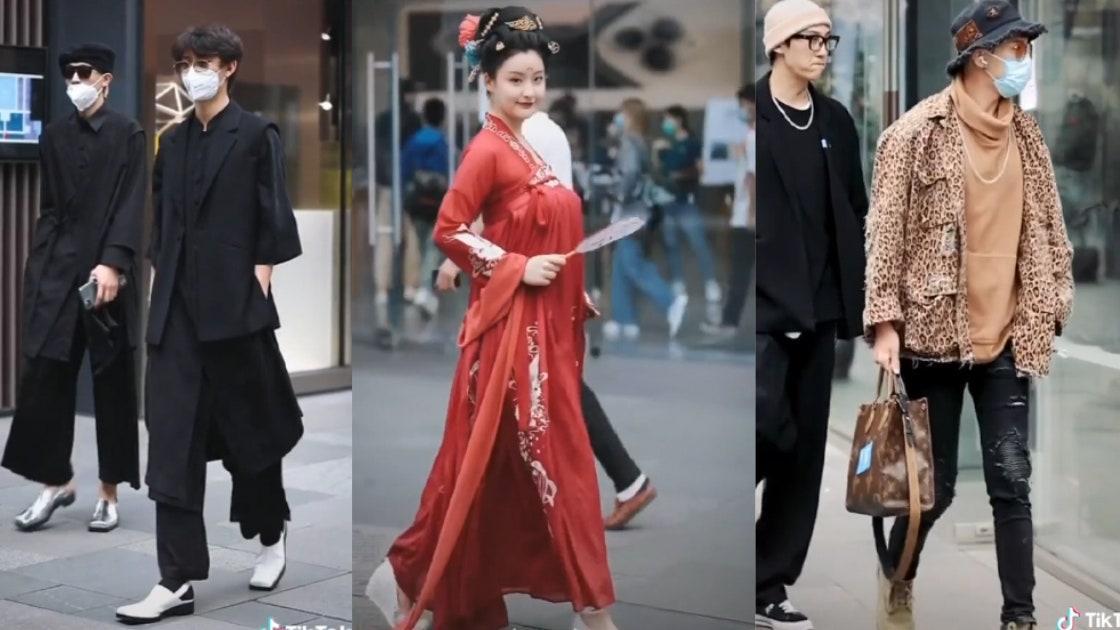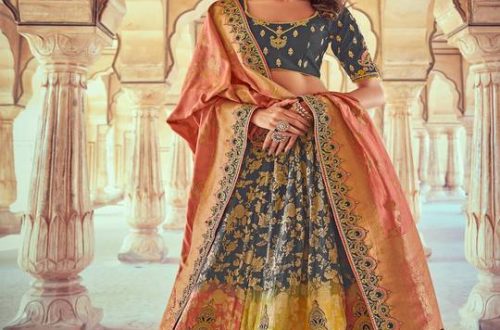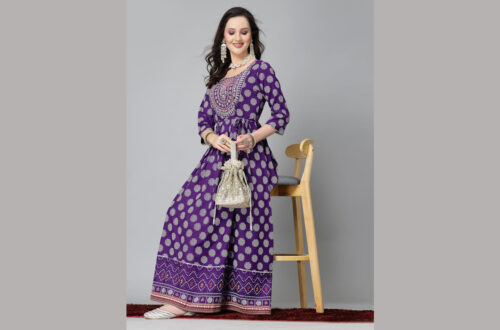The narrative of attire and ensembles is one of the most intriguing advancements in humanity’s set of experiences. Conventional Chinese Dress and Clothing has a long history and social substance, and it is a significant piece of Chinese great colonial legacy, so It has specific exploring esteem.
Each country on the planet has its one-of-a-kind traditional dress. The specific chronicles and societies could be perceived to recognize one resident from another.
Traditional Chinese dress and attire have been molded and created close by the intelligent impacts between the rest of the world and China’s dynastic practices.
Each unique dynastic has various extents of the region, social qualities, accepted practices, and so forth. Like this, numerous tasteful principles were made by the conditions (socially, topographically, monetarily, strategically) of certain dynastic. It is the fundamental justification for why conventional Chinese attire has many styles.
These are the top five Chinese cultural dresses you can buy from our online store Muzkin at the minimum possible price. Click on Mukzin Coupon Code and get an additional 30% discount while shopping.
5 Types of Traditional Chinese Clothing and Dress
For investigating the universe of conventional Chinese apparel, it is essential to gain proficiency with the most exemplary five classifications: Respectively, Hanfu, Cheongsam, Tang suit, Zhongshan suit, and customs of the minority ethnics.
Each classification has its creation strategies, and significant disparities could be seen while looking at changed classes or 1 class at various times.
This article gives a concise prologue to every class by perusing the accompanying substance, which could organize conventional Chinese attire’s essential systems.
1. Customary Chinese Dress –
Hanfu, with the name arranged from the Chinese signifying ‘Han individuals’ clothing,’ including numerous kinds and styles of conventional apparel worn by the Han Chinese.
The Han Chinese follow a typical family to the Huaxia, a name for the underlying confederation of farming clans living along the Yellow River. Huaxia addresses the aggregate Neolithic confederation of agrarian clans Hua and Xia who settled along the Central Plains around the center and lower scopes of the Yellow River in northern China.
Hanfu, as its definition, was brought into the world toward the start of the historical backdrop of Han identity. Hence, it has the most extended history among all conventional Chinese dress.
History of Hanfu
Hanfu has a long history dating back over three centuries. From the start of its experiences, Hanfu was indistinguishable from silk, apparently found by the Yellow Emperor’s partner, Leizu.
Hanfu ruled the Chinese design world from the Yellow Emperor’s rule (2969 BC-2598 BC) to the furthest limit of the Ming Dynasty (1368 – 1644).
Every administration has its style and feel. For example, Shenyi in Pre-Qin Dynasty; Ru dress in Qin and Han Dynasty; Tiaowenjiansequn in Wei Dynasty; Bambi in Sui and Tang Dynasty, and so forth.
A few dresses are famous and worn by individuals in various traditions; some are only a tiny blip on the radar. In the two cases, all Hanfu has somewhat developed and been affected by one another.
2. Qing Dynasty Best – Cheongsam Qipao
Cheongsam, otherwise called Qipao in Mandarin, is a traditional dress with its starting points, thinking back to the seventeenth century. It is a kind of starvation body-embracing dress with certain Chinese elements of Manchu beginning. It was called mandarin outfit during the 1920s-1930s and promoted by privileged ladies in Shanghai.
Qipao History
China was controlled by Manchus rather than Han Chinese in the Qing line. The rulers utilized a regulatory division called the Eight Banner framework. Initially, they coordinated just the Manchu families inside this framework, yet who joined Mongols and Han Chinese.
The Manchus, and anybody living under the Eight Banners framework, wore different attire from ordinary regular folks. Such attire comprised comparative long robes for all kinds of people and was known as Changpao.
Under the dynastic regulations after 1636, all Han Chinese were constrained under punishment of death to embrace the Manchu male hairdo, the line, and dress in Manchu Changpao rather than conventional Han Chinese Clothing.
Nonetheless, in the nineteenth century, it was boundless for females to wear Qipao on formal and easygoing events willfully.
Winged serpent and Phoenix is a traditional wedding dress inclined toward Chinese ladies. It is prevalently worn in China as a wedding dress, customarily in red. Cheongsam is typically weaved with intricate gold and silver plans. Ladies in southern China wear Qipao or an adjusted two-piece style, extravagantly enhanced with a gold winged serpent and phoenix design.
3. Men’s Style – Tang Suit
The Tang suit, likewise been deciphered as Tangzhuang, frequently alludes to a kind of present-day Chinese coat rather than the Tang Dynasty’s clothing (AD 618 – 907).
Beginning of name
Albeit the Tang suit isn’t clothing in the Tang administration, it has something to do with it. The Tang tradition is one of the most prosperous times in Chinese history. Accordingly, individuals commonly utilize Tang to allude to traditional Chinese culture. For instance, Chinatowns in the U.S. or, on the other hand, the U.K. is additionally be called Tang People Street.
As Tang People Street’s name, Tang suits address specific attire of profound customary Chinese societies.
Tang Suit History
who could follow the Tang suit history back to the mid-1900s (toward the finish of the Qing Dynasty)? It results from the blends between Manchu’s coat components and the western coat components.
The Chinese government had delivered another uniform framework in 1929. With this new framework, the Tang suit had become one of the conventional public clothing for guys.
As of late, with different styles and creation methods, the Tang suit is getting increasingly more famous in China and around the world.
Tang suit has shown up on numerous global occasions. On the Asia Pacific Economic Cooperation (APEC) in 2001, all public chiefs wore a tang suit in illustrious blue, red, and weaved with a round example of peonies-China’s public blossom. Besides, the Tang suit could likewise be seen at the 2008 Olympic Games and a portion of the World Trade Organization gatherings.
4. Formal Attire – Zhongshan Suit
The cutting edge Chinese tunic suit is a style of male clothing initially referred to in China as the Zhongshan suit (after Sun Yet-Sen, likewise called Sun Zhongshan), and later as the Mao suit (after Mao Zedong).
Sun Yat-sen presented the style not long after the Republic of China was established as a type of public dress, even with particularly political and later legislative ramifications. He put together the suit concerning the Japanese Cadet uniform.
Who additionally knew the suit to have social ramifications. The four pockets addressed the Four Virtues of the Chinese culture: Propriety, Justice, Honesty, and Shame, and the five buttons addressed China’s five parts of government.
History of the Zhongshan Suit
Whenever the Republic was established in 1912, the dress style in China depended on Manchu dress (Qipao and Changsha), which the Qing Dynasty had forced as a type of social control.
Most Han Chinese progressives who ousted the Qing were powered by the disappointment of the Qing to protect China, and an absence of logical headway contrasted with the West. Indeed, even before the Republic’s establishment, more seasoned Chinese dress types were becoming disagreeable among the first class. They prompted the advancement of Chinese clothing, which consolidated the Changshan and the Western cap to frame another dress. The Zhongshan suit is a comparable advancement that joined Western and Eastern styles.
Jiang Zemin and Hu Jintao just wore the Mao suit on extraordinary events, for example, significant coffee shops or the function denoting the 60th commemoration of the People’s Republic in 2009.
Hu Jintao even made an appearance at a dark-tie state supper in the United States wearing a matching suit, drawing in analysis for being underdressed at a conventional event. Notwithstanding, in the Xi Jinping organization, the Mao suit made a rebound as a strategic uniform and evening dress.
5. Ethnic Minorities – Colorful Costumes
Like Japan, Korea, France, and Greece, a few nations are mono-ethnic nations. China isn’t one of them with multi ethnics living down the ages.
Ethnic minorities in China are the non-Han Chinese populace in China. China formally perceives 55 ethnic minority bunches inside China, notwithstanding the more significant Han part. Starting in 2010, the packed crowd of authoritatively perceived minority bunches contained 8.49% of central area China’s populace.
The level of variation between ethnic gatherings isn’t predictable. Numerous ethnic groups are depicted as having remarkable attributes from other minority gatherings and the prevailing Han. Most Hui Chinese are vague from Han Chinese, except that they practice Islam, and most Manchu are viewed as generally absorbed into overall Han culture. In any case, some are the same as the Han, more excellent part bunch.
The 55 ethnic minorities are Mongolian, Hui, Tibetan, Uygur, Miao, Yi, Zhuang, Dai, etc.
With regards to the apparel of the ethnic minorities, incredible varieties could be seen due to the topographical, social, and recorded factors.





